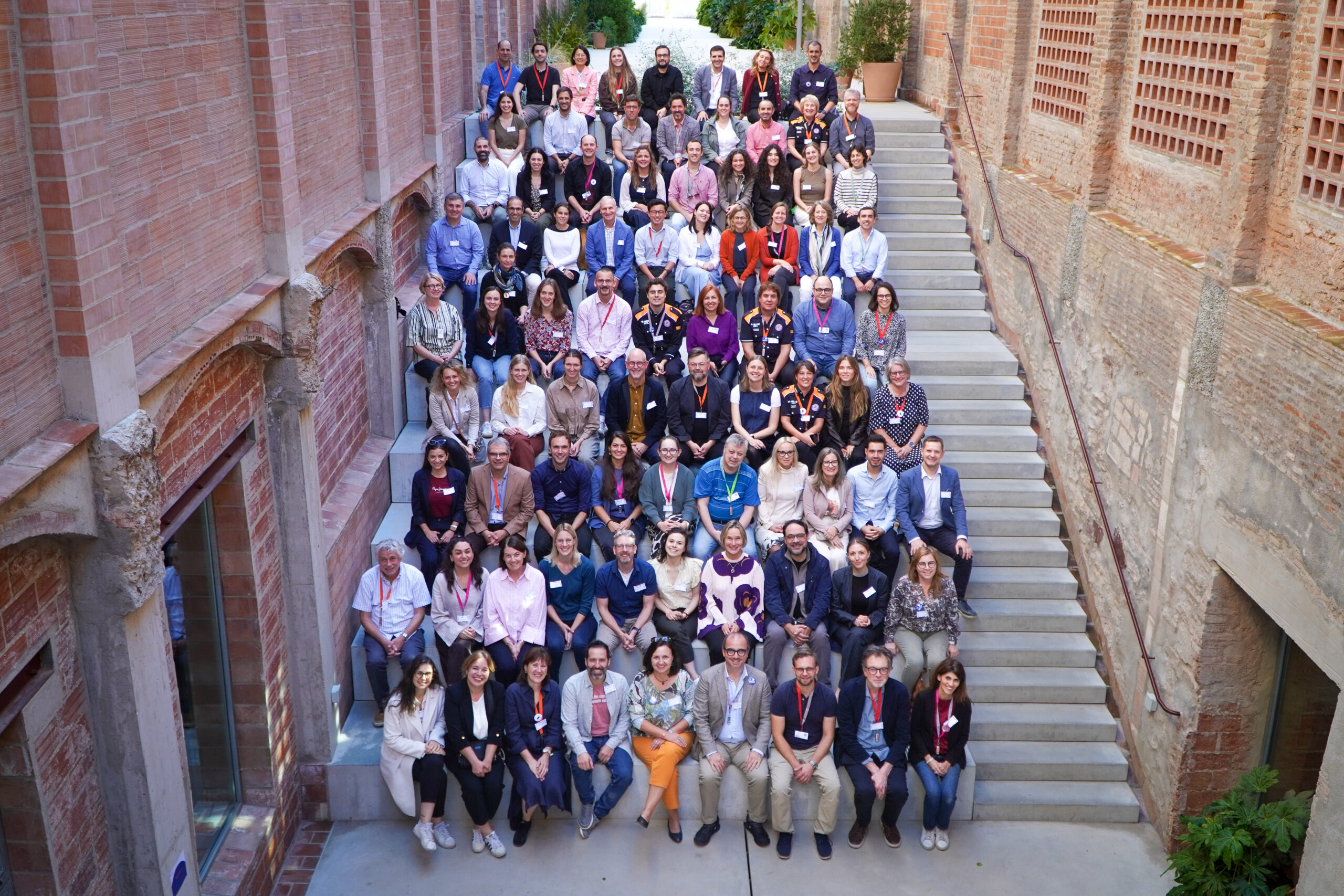Twelve European regions boost resilience to climate change-related risks with RESIST solutions
Barcelona, 27 October 2025 – Climate risks have been increasing over the past 10-15 years, with the European continent warming twice as fast as the global average, according to the European Environment Agency (EEA). The impacts of a changing climate affect all aspects of society, from human health to the economy. For example, Spain has suffered economic losses exceeding 95 billion euros since 1980 due to extreme weather events as per EEA figures, highlighting the urgent need for adaptive strategies.
In this context, the 56 partners of the RESIST Project, representing 12 European regions, met between 21-23 October in Terrassa, a medium-sized city near Barcelona, Spain, to share progress made so far after two-and-a-half-years of project work and to learn from one another, as many regions face similar challenges and contexts.
During the meeting, partners were also shown a live action demonstration of how drone technologies can help detect and manage wildfires. The pilot test was carried out at the Audiovisual Park of Catalonia, on the outskirts of Terrassa, adjacent to the city’s forest area.
“It’s about using technology to our advantage to make cities more resilient. It’s not about replacing what we already do but about improving it and supporting our work with innovative tools.”
– Àlex Torres, RESIST Technician, Civil Protection Terrassa
The City Council of Terrassa, through its Civil Protection Unit, demonstrated how the system operates. A thermal camera, installed on the roof of the historic building of the Audiovisual Park, detects heat sources and smoke columns. If the system identifies an anomaly, the images and data are sent in real time to the platform of the Municipal Operational Coordination Centre, which can then deploy the drone to the specific coordinates to inspect the area and transmit live images to the emergency services. The aim is to detect potential forest fires at an early stage and send alerts promptly to Civil Protection and emergency services.
Digital and community engagement solutions in Catalonia
Catalonia is one of the leading regions within the RESIST Project. It is also developing and testing the Argos tool – a digital solution designed to enhance disaster preparedness – and a citizen participatory toolkit to actively engage communities in climate adaptation planning. These solutions are also being shared and transferred to Baixo Alentejo (Portugal) and Puglia (Italy) within the framework of the project.
The city of Terrassa has been the main testing site in Catalonia for the RESIST Project through local partners, the Civil Protection Service. The city faces multiple climate-related hazards, including floods, wildfires, and heatwaves.
As the local partners explained during the two-day meeting, Terrassa is working to strengthen its resilience to flooding by installing sensors in streams to monitor rising water levels. This enables authorities to close crossings at critical points and alert citizens to potential risks. The data from these sensors, along with information from many others, is integrated into the Argos tool, allowing local authorities to view all emergency response information in one place and make faster, better-informed decisions.
“In many cases, we can’t prevent an extreme weather event, but if we know what to do, we gain precious time that allows us to act more effectively and, in the most severe cases, save people’s lives.”
– Shinju Park, Senior Researcher, Polytechnic University of Catalonia
In recent months, local partners in the RESIST Project have also been working with vulnerable communities in Terrassa to better understand the impacts of heatwaves on their daily lives. The insights gathered are being shared with local authorities through an open dialogue to test and refine the citizen’s participatory toolkit.
Shared Solutions Across Europe
The regional partners, supported by the project’s technical partners, are advancing solutions to multi-hazard climate change impacts such as wildfires, flooding, soil erosion, and heatwaves. They work directly with local and regional authorities and communities across twelve European regions to test and implement these solutions.
“RESIST is all about meaningful collaborations between different stakeholders, within the project regions and multilaterally across European actors and initiatives.”
– Vilija Balionyte-Merle, RESIST Project Coordinator and Senior Business Developer at SINTEF
The solutions are diverse, ranging from those focused on policy and governance – such as the cost–benefit analysis of nature-based solutions (NBS) tested in Southwest Finland – to others centred on community engagement, like the integrated areas of landscape management being trialed in Central Portugal. Despite their diversity, all regions within RESIST are working towards developing a Graphical Digital Twin of their area, enabling them to better foresee and predict the impacts of climate change with greater precision.
About RESIST
RESIST is a five-year EU-funded project that has emerged from the need to make regions more resilient to climate change. The effects of environmental change are already a reality, affecting our societies in many ways. To address this, we must adapt to both current and projected impacts of climate change through concrete action.
The project adopts a new, practical framework in which climate adaptation pathways are tested in four leading regions of the European Union (EU): Southwest Finland, Central Denmark, Catalonia, and Central Portugal.
The know-how and adaptation pathways developed and tested in these leading regions will be transferred to eight twinning regions through mutual learning activities and immersive digital twins. The eight twin regions are Normandy (France), Eastern Macedonia and Thrace (Greece), Blekinge (Sweden), Zemgale (Latvia), Puglia (Italy), Baixo Alentejo (Portugal), Vesterålen (Norway), and Extremadura (Spain).












